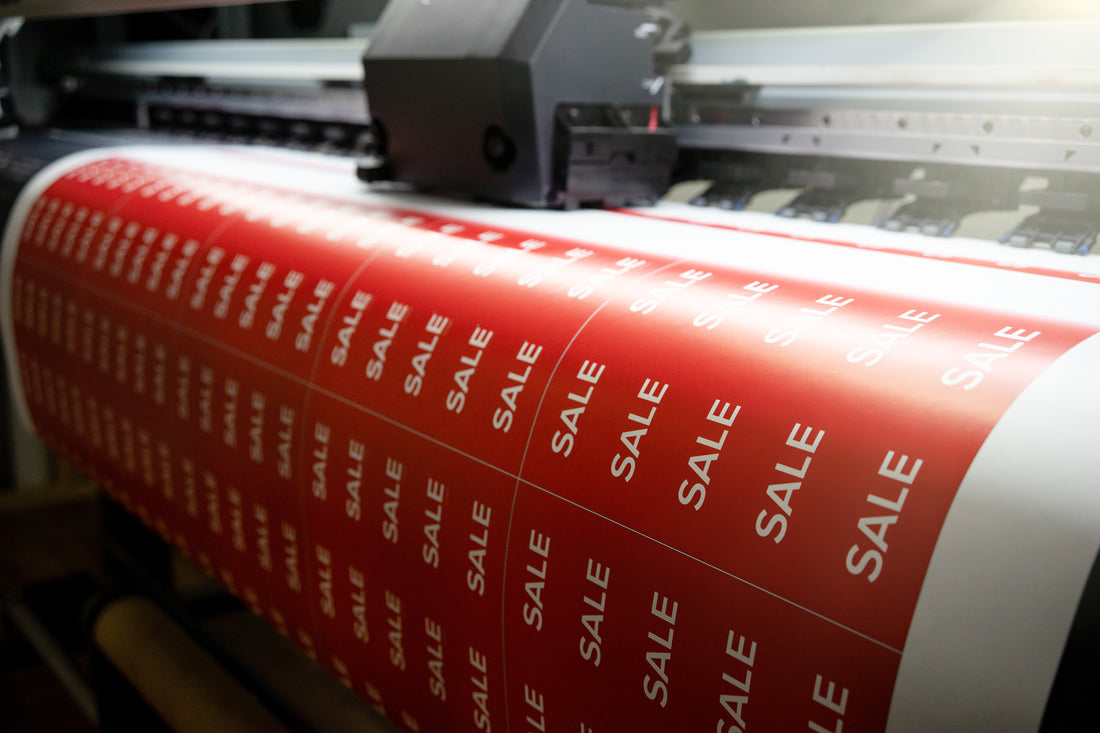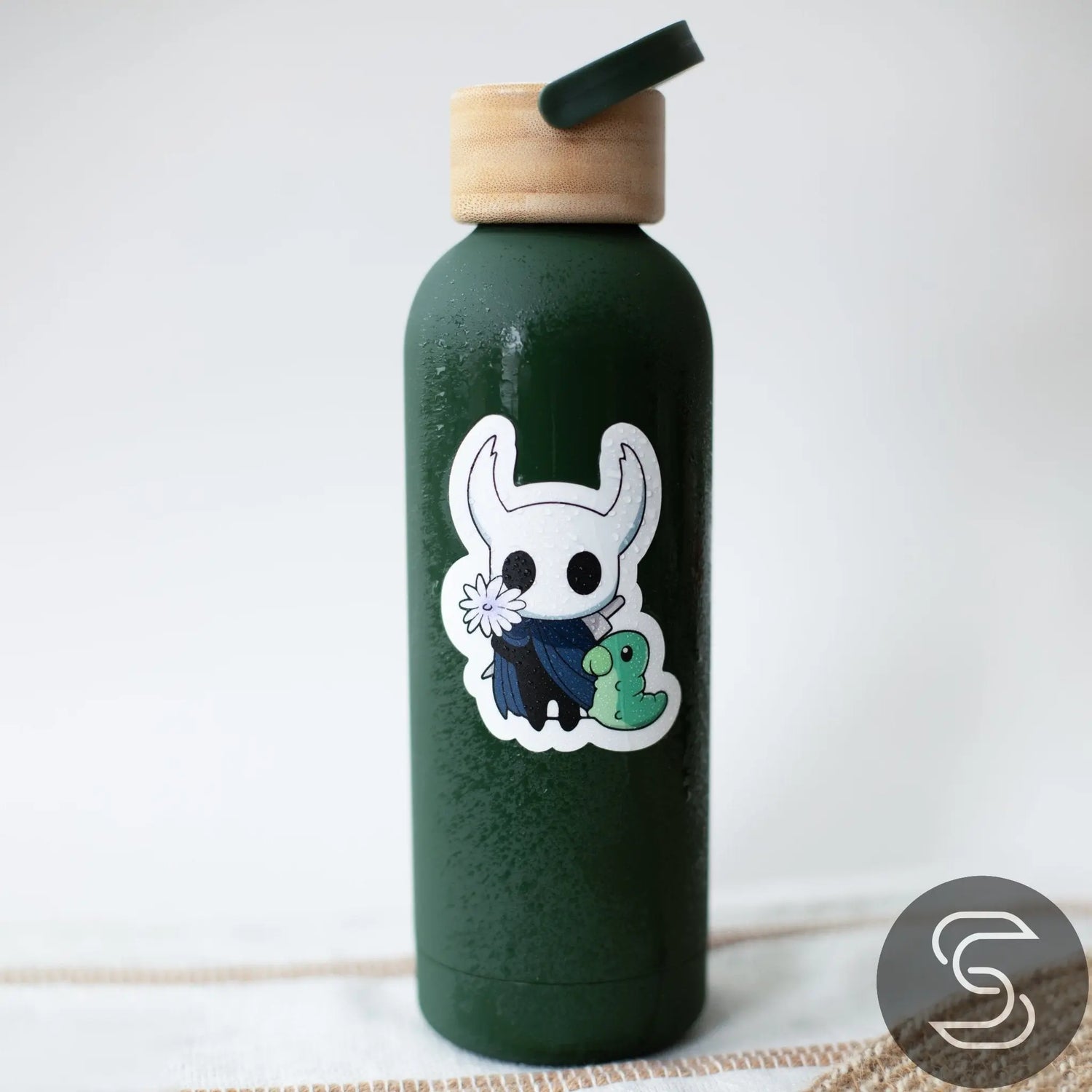
What to Expect from Different Printing Methods
Share
If you’re thinking about printing custom stickers—whether for your business, a personal project, or just for fun—choosing the right printing method is key to getting the best results. Digital printing has become the standard for most people due to its versatility, affordability, and quality. But did you know that there are different types of digital printing techniques? Each has its strengths depending on your design, budget, and project size.
In this post, we’ll explore the most common printing methods you’re likely to use when printing stickers, what to expect from each, and printer suggestions for each method.
1. Inkjet Printing – Affordable, Home-Friendly Option
What It Is:
Inkjet printing is one of the most accessible options for custom stickers. It involves spraying small droplets of ink onto sticker paper to create your design. Inkjet printers are easy to find, affordable, and great for small-scale projects.
What to Expect:
- Great for small batches: Inkjet printing is ideal for small runs, especially if you’re working on a personal project or small business order.
- Vibrant but not super durable: Inkjet printing offers vibrant colors but can be less durable than other methods, especially if the stickers will be exposed to water or outdoor conditions. Adding a laminate helps protect your stickers.
- Affordability: Inkjet printers are budget-friendly, making them a popular choice for beginners or hobbyists.
Recommended Printer:
- Epson EcoTank ET-2750: This inkjet printer is popular for its vibrant colors and high resolution. It’s also affordable and easy to use for personal sticker projects.
Best Practices:
- Use high-quality inkjet sticker paper: Ensure you’re using paper designed for inkjet printers for the best print quality.
- Add a laminate: If you want to protect your stickers from water or fading, applying a clear laminate will make a huge difference.
Things to Avoid:
- Outdoor use without protection: Inkjet stickers aren’t waterproof on their own, so make sure to laminate or coat them for protection if they’ll be exposed to the elements.
2. Laser Printing – Durable and Smudge-Free
What It Is:
Laser printing uses heat to bond toner (a powder) to the sticker material, creating a crisp, smudge-free result. Laser printing produces high-resolution images with sharp lines, making it perfect for stickers with intricate details or text.
What to Expect:
- Sharp, high-resolution prints: Laser printers excel at producing clean lines, especially for logos, text, and simple graphics.
- More durable than inkjet: The toner is heat-bonded to the material, making these stickers less prone to smudging and fading. They’re also more resistant to water.
- Less vibrant colors: While the colors are sharp, laser printing might not be as vivid as inkjet printing, especially for full-color artwork.
Recommended Printer:
- HP Color LaserJet Pro M454dw: This laser printer is known for its sharp image quality and durability, making it a solid choice for small business sticker projects.
Best Practices:
- Use laser-compatible sticker paper: Not all sticker materials can handle the heat of laser printing, so make sure your paper is specifically made for laser printers.
- Ideal for labels and business stickers: If you need high-resolution logos, barcodes, or text, laser printing is a great option for professional results.
Things to Avoid:
- Very vibrant or photo-realistic designs: Laser printers work best for designs with simple colors and clean lines. For bright, complex designs, consider inkjet or UV printing.
3. UV Printing – Bright and Durable
What It Is:
UV printing is a type of digital printing that uses ultraviolet (UV) light to instantly cure the ink as it’s applied to the sticker material. This results in durable, waterproof, and fade-resistant stickers that are ideal for outdoor or heavy-use applications.
What to Expect:
- Superior durability: UV-printed stickers are highly resistant to weather, UV rays, and even scratches, making them perfect for outdoor applications like car decals or bumper stickers.
- Vibrant colors: UV printing offers some of the most vivid and bright color options, with excellent detail retention.
- Great for medium to large batches: While UV printing can be cost-effective for larger runs, it may not be the cheapest option for smaller projects.
Recommended Printer:
- Roland VersaUV LEF-12i: This professional UV printer offers excellent quality for both small and large sticker runs. It’s perfect for users who need high durability and rich colors.
Best Practices:
- Use for outdoor stickers: If your stickers will face sunlight, rain, or other harsh conditions, UV printing is the way to go. This method ensures long-lasting vibrancy and durability.
- Great for promotional or vehicle stickers: UV printing is ideal for bumper stickers, car decals, or any sticker that will face the elements.
Things to Avoid:
- Small, personal projects: UV printing can be overkill if you only need a few stickers for personal use or short-term projects. It’s better suited for larger runs.
4. Thermal Printing – Quick and Efficient for Simple Designs
What It Is:
Thermal printing uses heat to transfer ink or create impressions on the sticker material. It’s commonly used for labels, shipping stickers, or simple one-color designs.
What to Expect:
- Best for simple designs: Thermal printers typically print in one color, often black, making them ideal for functional stickers like labels, barcodes, or shipping stickers.
- Fast and efficient: This method is fast and great for high-volume sticker production with simple designs.
- Durable: Thermal prints are durable, especially when using resin ribbons, which are resistant to heat, chemicals, and abrasions.
Recommended Printer:
- DYMO LabelWriter 4XL: This popular thermal printer is perfect for printing simple labels and stickers, offering speed and durability for high-volume needs.
Best Practices:
- Use for labeling: Thermal printing is best for functional stickers like product labels, shipping labels, or other uses where durability and speed are more important than color.
- Stick to simple designs: Since thermal printers are limited in terms of color and detail, this method is best for minimalistic, monochrome designs.
Things to Avoid:
- Complex, colorful designs: Thermal printers are not designed for multi-color or photo-realistic stickers. Stick to one-color designs for best results.
Choosing the Right Printer for Your Sticker Project
Now that we’ve explored the different printing methods, you can choose the best one based on your design, budget, and needs. Here’s a quick recap to help you decide:
- Inkjet Printing: Perfect for small, colorful projects at home. Best for personal use or small businesses. Consider using the Epson EcoTank ET-2750.
- Laser Printing: Best for high-resolution, professional-grade stickers with sharp details. Great for logos and text. Check out the HP Color LaserJet Pro M454dw.
- UV Printing: Ideal for durable, weather-resistant stickers with vibrant colors. Perfect for outdoor and heavy-duty use. For professional results, consider the Roland VersaUV LEF-12i.
- Thermal Printing: Fast and efficient for simple, one-color designs. Best for labels, barcodes, and functional stickers. Try the DYMO LabelWriter 4XL.
Ready to Print Your Custom Stickers?
At Stickr, we specialize in high-quality custom stickers using top-tier digital printing methods to ensure your designs come to life perfectly. Whether you’re printing at home or looking for professional-grade stickers, we can help you choose the best printing method for your project.
Contact us today to get started, or browse our range of custom sticker options to find the perfect match for your needs!
By understanding your printing options and choosing the right printer, you’ll be well-equipped to create custom stickers that look amazing and fit your budget. Whether you’re a hobbyist or a small business owner, Stickr is here to guide you every step of the way!

